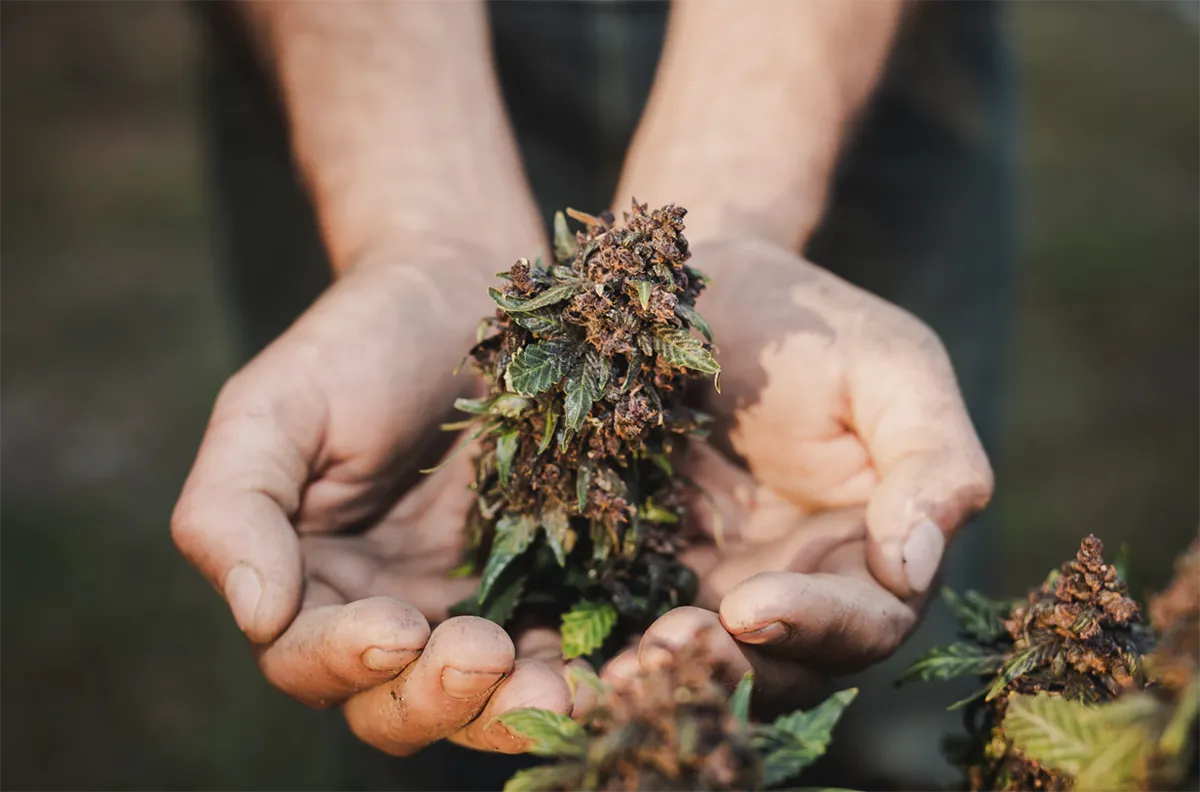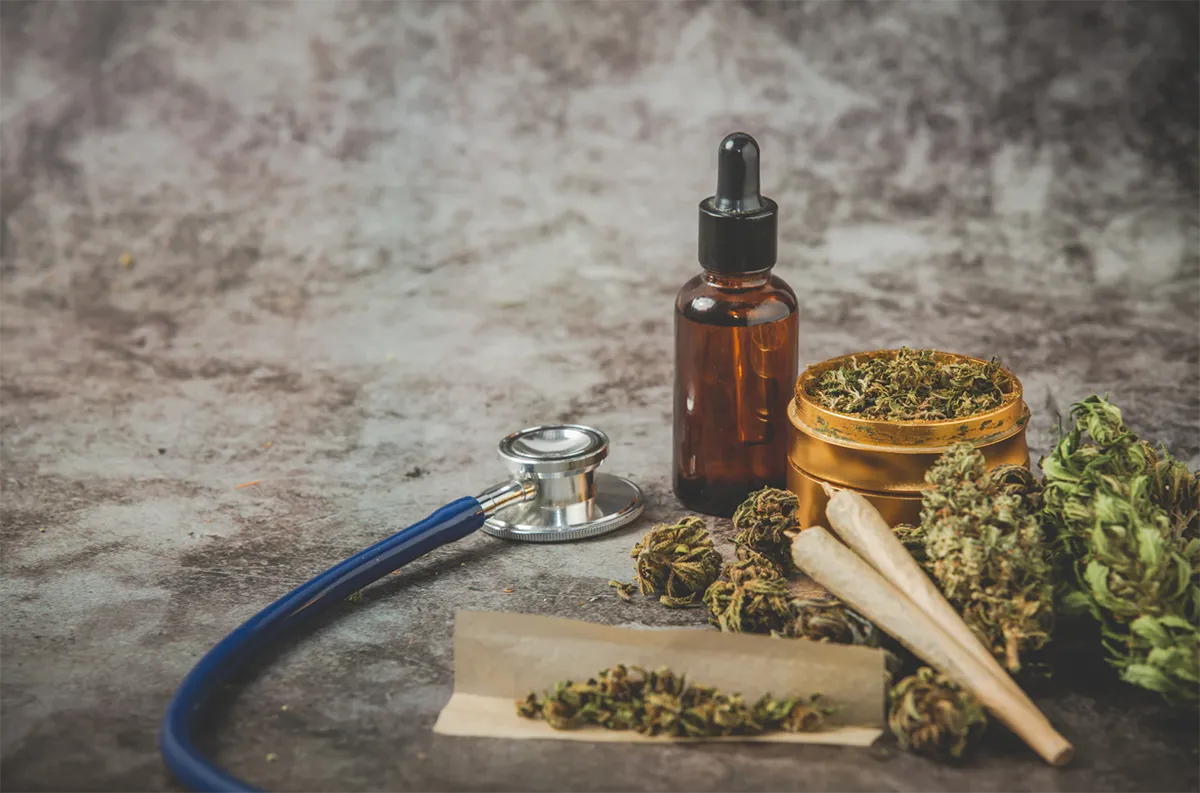Learn More About Cannabis Research Studies
What are Cannabis Research Studies?
Although “cannabis” and “marijuana” are frequently used interchangeably, they don’t necessarily mean the same thing.
- All items made from the Cannabis sativa plant are referred to as “cannabis.”
- The cannabis plant has 540 or so different chemical compounds.
- Cannabis sativa components or byproducts that have high tetrahydrocannabinol concentrations are referred to as “marijuana” (THC) - the primary component that has an impact on a person’s mental state.
The FDA has not authorized the use of cannabis for medical purposes. But it has cleared several medications that incorporate certain cannabinoids.
Certain uncommon forms of epilepsy, vomiting, nausea brought on by chemotherapy, and appetite and weight loss brought on by HIV/AIDS may all be treated by cannabinoid-containing medications. Additionally, some research points to the minor benefits of cannabis for multiple sclerosis symptoms and chronic pain. The research on cannabis for different ailments is still in its infancy.

Why is Cannabis Being Studied Through Research Studies?
Several NCCIH-funded research studies are examining the potential pain-relieving effects and action mechanisms of cannabis. These research studies seek to strengthen the evidence concerning cannabis’s chemical constituents and their possible use in pain treatment.
Additionally, the NCCIH is funding the following research on cannabis:
- An observational investigation of the impact of cannabis and its active ingredients on chronic low-back pain sufferers’ levels of inflammation, pain, and cognition.
- Research on methods to produce cannabis-like compounds in yeast.
- Studies examining the link between cannabis use and type 2 diabetes.
Many cannabis preparations authorized in more than 25 countries have been studied to treat multiple sclerosis symptoms.
There is some evidence from research that cannabis may assist in lessening anxiety. In one research of 24 patients with social anxiety disorder, those who took CBD experienced less anxiety during a mock public speaking test than those who took a placebo. Cannabinoids could be helpful for anxiety in persons with chronic pain, according to four studies.
Researchers have examined statistical data on populations to see if access to cannabis is linked to shifts in opioid use or changes in the damage caused by opioids. Inconsistencies exist in the results.
In 2018, a review of 47 research studies (with 4,743 participants) using cannabis for chronic pain conditions other than cancer pain indicated some evidence of a minor improvement. Compared to those receiving a placebo, 26% of those using cannabis had a 30% pain reduction. It’s possible that the difference was insignificant for patients to notice.
What Are the Types of Treatments Available For Cannabis?
Although no pharmaceutical therapies have been found to effectively manage cannabis and marijuana withdrawal or treat cannabis use disorders, attentive monitoring, drugs for some symptom relief, and other forms of supportive care can help prepare the way for long-term recovery.
One way of diagnosing a marijuana use disorder is the existence of cannabis withdrawal symptoms. When trying to stop using marijuana or reduce its intake, a marijuana-dependent person could go through withdrawal symptoms. If you’re curious about the aftereffects of quitting weed, this can be an excellent alternative to study.

Severe marijuana withdrawal might result in unpleasant symptoms like:
- Anxiety
- Depression
- Irritability
- Headaches
- Nervousness
- Restlessness
- Anger or aggression
- Insomnia
- Bad dreams
- Loss of appetite
- Fever, sweating, or chills
- Stomachache
- Cravings
Significant cannabis dependence might cause someone to smoke weed to relieve the unpleasant withdrawal symptoms, which can thwart recovery efforts. Because of the discomfort of withdrawal, it’s not uncommon for people trying to cut back or stop using marijuana to take up another drug or turn back to cannabis.
Despite certain complicated factors, quitting marijuana is entirely doable, and substance abuse therapy has assisted many in managing withdrawal and recovering from marijuana-related substance use disorders.
Regular weed smokers may have severe marijuana dependence. Once this occurs, quitting marijuana may cause several unpleasant side effects, such as cravings and erratic moods. It is possible to attempt to quit alone, but it can be difficult without the support, accountability, and direction of specialized therapy. You might find that the supervision and care offered by a cannabis addiction treatment program will help you give up using cannabis.
Treatment can assist people in staying safe and at ease when giving up marijuana. Relapsing on one’s preferred substance can be less likely with the monitoring and encouragement of treatment. Individualized treatment strategies may be beneficial because each person’s recovery needs could differ slightly. Cannabis-specific treatment may be the best option for someone who is struggling to stop using marijuana or has a cannabis use disorder.
To assist persons battling with marijuana use, addiction treatment specialists may employ a variety of behavioral therapies, such as:
- Cognitive-behavioral therapy: Based on the concept that many harmful behaviors result from unhealthy thought patterns, cognitive behavioral therapy (CBT) concentrates on treating multiple mental health issues. With CBT, one might examine their negative thought patterns and develop healthier ways to deal with their emotions.
- Contingency management: This therapy makes use of rewards and incentives to reinforce positive behavioral changes. When using a contingency management approach, healthcare professionals may present patients with observable rewards to reinforce their good habits (such as staying sober).
- Motivational enhancement therapy: The goal of motivational enhancement therapy is to dispel any treatment ambivalence and ignite an innate desire for improvement in those who struggle with substance abuse.
What Are Some of the Breakthrough Clinical Trials Involving Cannabis?
2022: Cannabis for Medical Use: Analysis of Recent Clinical Trials in View of Current Legislation - This study reviewed the latest clinical trials in line with current legislation and found that only 10% (43) of the 400 matches provided evidence on studies or clinical guidelines involving cannabis for medical purposes.
Australia, Canada, Brazil, Denmark, Israel, Germany, Switzerland, Netherlands, the United Kingdom, and the United States of America all participated in the relevant trials. Despite the scarcity of studies, the medical marijuana laws in each concerned country were examined, and some key characteristics were noted. A few included the prescription process, pathologies for which medical marijuana is indicated, products for sale, dispensation forms, and permission to grow marijuana for therapeutic purposes.
2021: Effect of Cannabidiol and Δ9-Tetrahydrocannabinol on Driving Performance - Participants ranged in age from 20 to 50 and had considerable driving experience, reported little use of cannabis but had a minimum of ten prior cannabis-related experiences, looked at the effects of vaporized cannabis with a THC or CBD predominance on driving performance.
Participants were given vaporized cannabis in either 13.75 mg THC, 13.75 mg CBD, 13.75 mg CBD, and 13.75 mg THC or a placebo. P On a 100-km highway circuit, participants underwent a driving test on a highway circuit while sustaining a speed of 59 mph and a consistent lateral position.
Compared to the CBD condition and placebo, the SDLP in the THC condition was substantially higher. Driving performance was not significantly affected by CBD alone, as evidenced by the lack of a difference between the placebo and the CBD.
2020: Association Between Self-reported Prenatal Cannabis Use and Maternal, Perinatal, and Neonatal Outcomes - This study aimed to investigate the association of self-reported cannabis use by pregnant women and unfavorable maternal and perinatal outcomes. The primary outcome the researchers investigated was early preterm births amongst a cohort of 661,617 women. 6.1% of women who did not use cannabis experienced preterm births before 37 weeks, compared to 12.0% of women who used cannabis during pregnancy. The results indicate that pregnant women should not use cannabis during the weeks of their pregnancy or lead up to pregnancy. Nevertheless, future studies should be conducted to investigate the impact of cannabis on pregnant mothers and developing fetuses concerning cannabis ingestion at different gestational stages.
2020: A Review on Studies of Marijuana for Alzheimer’s Disease – Focusing on CBD, THC - This review article examined nine peer-reviewed papers that looked into the effects of cannabis on dementia and Alzheimer’s. Since 1995, the frequency of Alzheimer’s has increased due to the rising life expectancy. As possible pharmacotherapies for Alzheimer’s disease, cannabis must be further studied. According to a review of research on CBD, it can shield some brain cells from the degenerative processes involved in Alzheimer’s disease. Additionally, they demonstrated how CBD could encourage the formation of neuronal cells in the brain’s hippocampus. Additionally, it was revealed from the reviewed studies that combined THC and CBD seem to be more effective at reducing the causes of Alzheimer’s disease than CBD or THC alone.
2019: Associations between marijuana use and anxious mood lability during adolescence - This study looks at the relationship between marijuana usage within the past 30 days and anxious mood lability between early and mid-adolescence (grade 8th to 10th).
The results of multilevel models with measurement waves revealed that participants reporting recent marijuana use had significantly greater levels of apprehensive mood lability than those without.
2019: Incidence of Pediatric Cannabis Exposure Among Children and Teenagers Aged 0-19 Years Before and After Medical Marijuana Legalization in Massachusetts - The study examined incidents of cannabis exposure in people ages 0 to 19 that were documented by the Regional Center for Poison Control from 2009 to 2016. The study’s goal was to compare the frequency of juvenile cannabis exposure confirmed cases before and after Massachusetts legalized medical marijuana (MML). It was discovered that when Massachusetts legalized medical marijuana, the occurrences of children being exposed to cannabis increased.
Despite adopting warning labeling and childproof packaging, pediatric cannabis exposure incidents surged in Massachusetts when medical marijuana usage became legal in 2012. This study adds to the growing body of evidence indicating that MML might be linked to an increase in cases of very young children being exposed to cannabis and builds on earlier research indicating that teens are also having more encounters with the health system connected to cannabis via the RPC. Given the spike in sales of MML and retail cannabis in more US states, further effort is needed to prevent children and adolescents from accessing concentrated extracts and higher-potency edibles.
2012: A Study to Evaluate the Effects of Cannabis Based Medicine in Patients With Pain of Neurological Origin - This randomized clinical research looked at a cannabis-based medicinal extract’s capacity to treat neurologically related chronic persistent pain.
A seven-day period followed a 21-day randomized, double-blind, concurrent correlation of GW-1000-02 with a placebo, self-titrated to the resolution of symptoms or maximum recommended dose, for volunteers with Multiple Sclerosis or another neurological function with an eligible chronic refractory pain symptom. By comparing the change from the daily recorded baseline pain score using Box Scale-11, researchers evaluated the cannabis-based medicinal extract’s capacity to relieve chronic refractory pain.